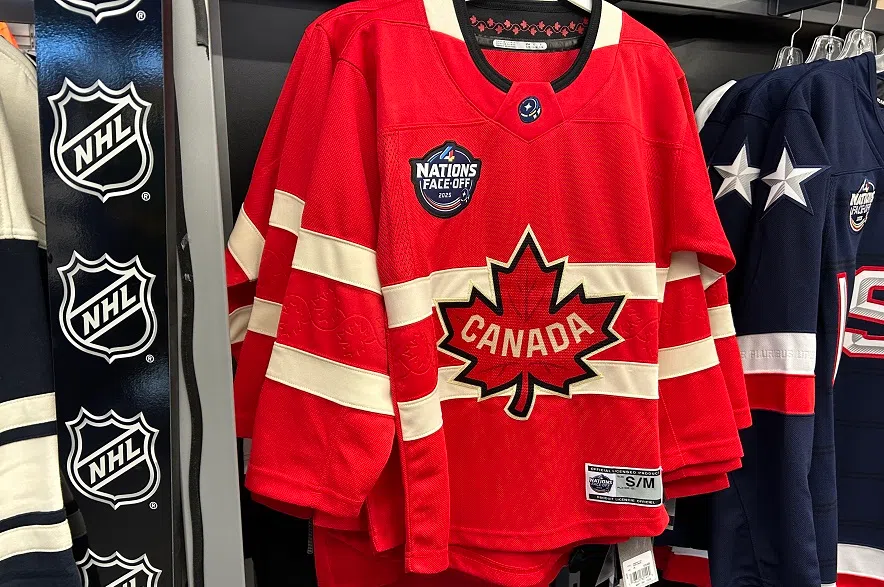The province of Saskatchewan is leading the way when it comes to reconciliation between Indigenous and non-Indigenous people, said Lieutenant Governor Russell Mirasty in Prince Albert on Tuesday.
Mirasty, who is Cree and a member of the Lac La Ronge Indian Band, was in the city as new highway signs that will mark the boundaries between the different treaty areas were unveiled.
“I can’t comment on the entire journey of reconciliation but certainly, you know, when we talk about treaties, Saskatchewan, in my mind, leads the way,” Mirasty said.
He pointed specifically to initiatives like requiring treaties to be taught in school, the work of the Office of the Treaty Commissioner, and official government signage marking treaty boundaries.
“There is no other province that mandates the education system to have treaty education within the classroom, and such an important step because then young people are introduced to treaties early on. As they mature and learn more than it puts everybody in a better place of knowledge and accepting of who we are as a people,” Mirasty said.
The first sign marking the edges of a treaty area was erected in 2022 next to Highway 11 near Bladworth, telling drivers they were entering either Treaty 4 or Treaty 6.
Last year, more signs were put up — one on Highway 39 near Estevan at the Treaty 2/Treaty 4 boundary, another near Moosomin between Treaty 2 and Treaty 4 and the fourth sign was put up on Highway 16 near Lanigan to show where Treaty 4 leaves off and Treaty 6 begins.

These signs will soon be put up along various highways, telling drivers they are entering a new treaty territory. (Susan McNeil/paNOW Staff)
Signs seen as significant by chiefs
Following Tuesday’s announcement, four more signs will be put up.
- One will show the boundary between Treaty 6 and Treaty 6A and be placed on Highway 2 north of Prince Albert.
- Another set will go along Highway 102/905 southeast of Southend at Treaty 6A and Treaty 10 Boundary.
- Drivers on their way to Nipawin will see signs along Highway 55 marking the edge of Treaty 5 and Treaty 6.
- And on Highway 955 north of La Loche, another set of signs will mark the Treaty 8 and Treaty 10 boundary.
While erecting signs may seem like a small effort, all the chiefs gathered at the Chief Joseph Custer Reserve, an urban reserve in Prince Albert, agreed that such steps matter and are significant.
Each sign mentions the treaties affected, has their local Indigenous language on the sign and says “welcome.”
Indigenous groups in Canada have spent decades pushing the various iterations of the Crown to honour the Treaties as they were written.
“So as we reflect on the Treaties, especially for you that may not know anything about them, I think that awareness as you delve into what they mean, you’ll come to the realization — to that conclusion really — that we are all treaty people, we all are supposed to have benefited from the treaties,” said Mirasty.
Read more
- Q&A: Mirasty celebrates five years as Sask.’s lieutenant governor
- Lac La Ronge Indian Band approves over $600 million settlement with federal govt.
- More Sask. students will learn in Cree, Dene thanks to Indigenous teacher ed. funding
One of the goals of having highway signs is to spur drivers to think or discuss the signs and what they represent.
At the ceremony and news conference in Prince Albert announcing the most recent batch of signs, it was not lost on MLA Jim Lemaigre (a member of the Clearwater River Dene Nation) that the representatives of the Crown were mostly Indigenous people.
Lemaigre said he once took an opportunity to create a meeting between himself as MLA, Governor General Mary Simon who is Inuit, and the person who facilitated the meeting was Mirasty, a Cree man.
“It was quite surreal because sometimes we don’t realize how far we’ve come and that was the reflection of that moment, so it was a very personally proud moment,” he said.
Lemaigre said that for him, Indigenous and non-Indigenous have a common history represented in the treaties.
He wants to see movement in economic reconciliation too, something he has spoken about in the past.
Mirasty’s official police escort was Prince Albert Police Deputy Chief Farica Prince, who is from the Sioux Valley Dakota Nation in southern Manitoba.
The announcement was made just before the Prince Albert Grand Council kicked off its three-day Gathering of Nations celebration on its grounds in the South Hill area of the city.
While not every highway will have a sign, every treaty will have a sign, said a Ministry of Highways represenative.
Read more
- Q&A: Mirasty celebrates five years as Sask.’s lieutenant governor
- Lac La Ronge Indian Band approves over $600 million settlement with federal govt.
- More Sask. students will learn in Cree, Dene thanks to Indigenous teacher ed. funding







